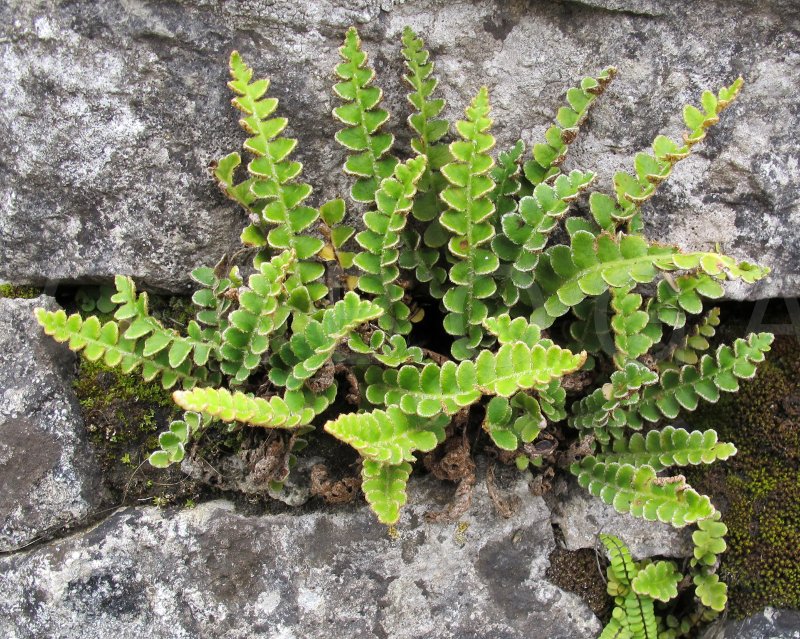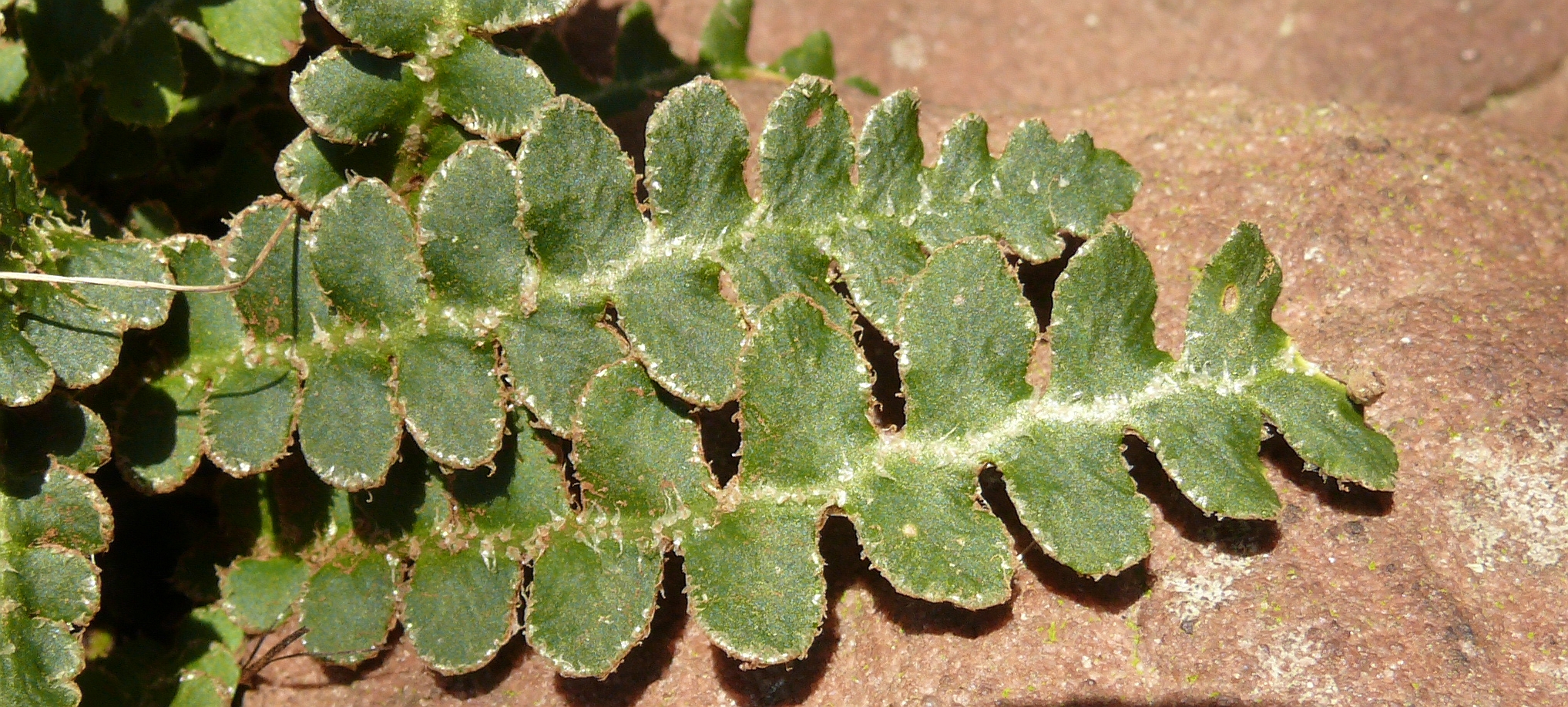Asplenium ceterach
Milzfarn ( Asplenium ceterach )
The Milzfarn ( Asplenium ceterach, syn. Ceterach officinarum ) is also called Schriftfarn or Apothekerfarn and is a species of the family Streifenfarngewächse ( Aspleniaceae ), which is prevalent in Central Europe. In Germany it is under nature protection. It belongs to the poikilohydric plants ( Seasonally wet plants, so-called " resurrection plants"). After a long drought, the plants look rolled and dried out; once it gets wet, they turn green.
Features
The plant reaches a height 6-20 cm. The leaf blade is linear in outline to linear- lanceolate, dull, pinnatisect, with both sides of nine to twelve semi- circular to ovoid, ganzrandigen sections. The lower leaf surface is covered with lasting, mutually ziegeldachig opaque, light brown, egg-shaped chaff shed. These are available on the leaf edge of something and so give the fronds a silvery hem. If dry, the leaves curl up. The spreuschuppige page then protects the plant against evaporation. The spores attain their maturity from June to August.
Occurrence
The main distribution area of Milzfarns located in Mediterranean areas of the level to higher mountain ranges rising. In France, several interesting sites were confirmed in the south of the Savoy at altitudes 1100-1600 m. Without taking damage, resists the plant in this region droughts and considerable temperature differences. In Austria it is very rare in Burgenland and in danger of extinction; in Vorarlberg they considered extinct. In Germany they are found in winter mild areas and especially in wine-producing areas of the river valleys, such as the Rhine Valley. The Milzfarn thrives in rock and brick columns. In temperate Europe, these are preferably settled rather in sunny locations in Southern Europe in sheltered places.
Ecology
As xerophyte the Milzfarn adapted in various ways to dry locations. In this alternating wet plant water loss limits their metabolic processes, but does not die from. If dry, the cells shrink to the fronds top a stronger, causing the front with chaff shed leaf underside turns up and the tide finally curl inward. The evaporation rate is reduced as a result. The rust-brown chaff scales reflect the incident sunlight to a great extent, which the chlorophyll is protected. They also support a rapid water uptake, since they promote rapid capillary water line already in short-term moisture, such as dew.
System
The Milzfarn was first published in 1753 by Carl Linnaeus in Species Plantarum.
There are two subspecies, which differ only by their number of chromosomes and their pore size:
- Asplenium ceterach subsp. bivalens (DE Meyer) Greuter & Burdet, Syn Asplenium javorkeanum Vida, Ceterach javorkeanum ( Vida ) Soó.
This subspecies is with 2n = 72 chromosomes, diploid, the size of the spores ranges 32-39 microns. It is rare and occurs in Italy, Hungary, Southeast Europe and Turkey.
- Ceterach Asplenium L. subsp. ceterach
This is the most common subspecies; tetraploid is 2n = 144 chromosomes, the size of the pores ranging from 41 to 48 microns. It occurs in Europe (especially in the Mediterranean area ), in North Africa, in the Middle East to East Asia.
Special
In the Middle Ages as " Cheterak " designated fern was used as a remedy for spleen diseases.
Swell
- Gerhard KF Stinglwagner, Ilse E. Haseder, Reinhold Erlbeck: The Cosmos forest and forest lexicon, Kosmos, Stuttgart 2005, ISBN 3-440-10375-7.
- Botany in Pictures - Flora of Austria
- Philippe Julve: Baseflor. Index botanique, écologique chorologique et de la flore de France. Access: April 23, 2004 ( online).
- Tadeusz Reichstein Aspleniaceae. In: Karl Ulrich Kramer ( ed.): Illustrated Flora of Central Europe. Pteridophyta, Spermatophyta. Founded by Gustav Hegi. Third, completely revised edition. Volume I. Part 1 Pteridophyta, Paul Parey, Berlin / Hamburg 1984, ISBN 3-489-50020-2, pp. 221-224.
- Ruprecht Duell, Herfried Kutzelnigg: Pocket Dictionary of Plants in Germany. A botanical and ecological excursion companion to the most important species. 6 completely revised edition. Quelle & Meyer, Wiebelsheim 2005, ISBN 3-494-01397-7.

.jpg/220px-Asplenium_ceterach_(Sardinia).jpg)








